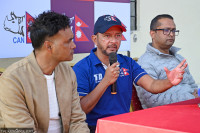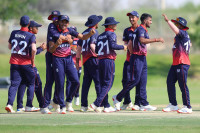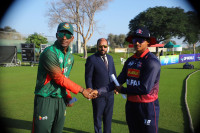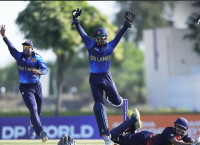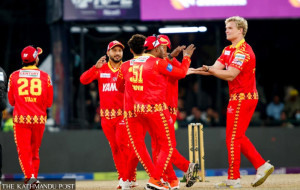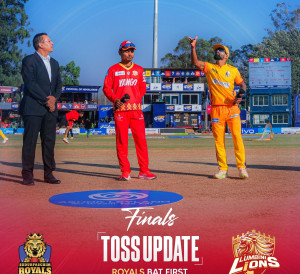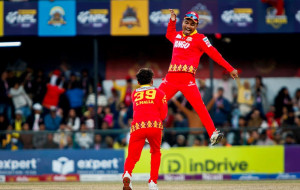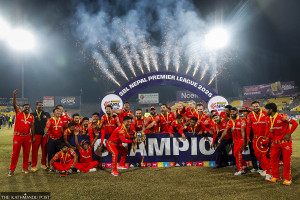Cricket
Paras Khadka, the face of Nepali cricket, announces his international retirement
Fellow players say the former captain, 33, could have played for a couple of years more. He says he has no energy to play but wants to be the game’s administrator.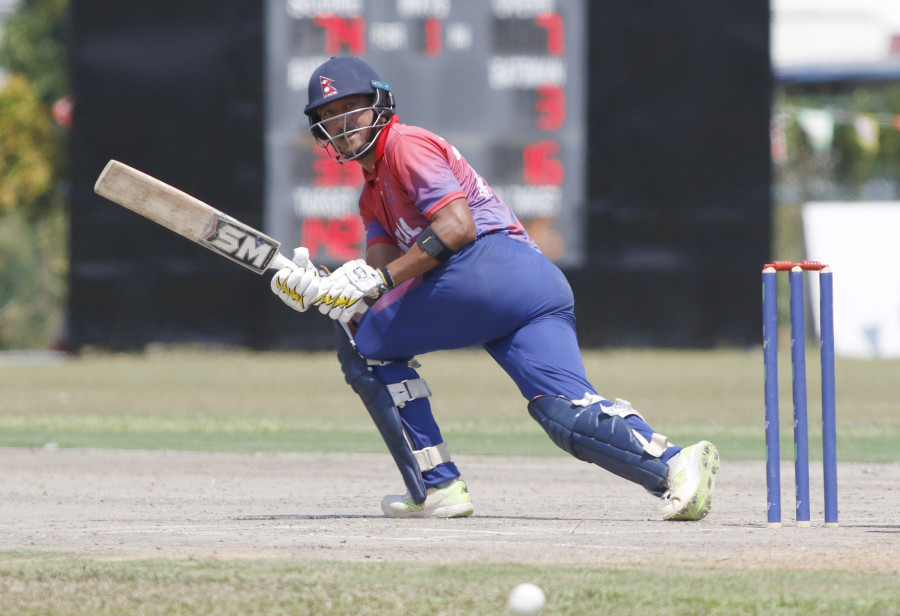
Prajwal Oli
Paras Khadka, the face of Nepali cricket, has retired from international cricket.
Khadka first represented Nepal in the Asian Cricket Council U-15 tournament in 2002 and made his debut for Nepal’s senior team in 2004 in the Intercontinental Cup in Malaysia.
He also captained Nepal from 2009 to 2019.
“With utmost clarity, respect and gratitude, I have now decided to retire myself from playing international cricket,” the 33-year-old cricketer wrote on Twitter on Tuesday.
Khadka, an all-rounder, led team Nepal’s elevation from a Division 5 team, the lowest tier of international cricket, in 2010 to its status as an one-day international (ODI) nation, the highest tier, in 2018—a rare achievement for any country in such a short period. Apart from Nepal, Afghanistan is the only other country to climb up the rungs of the International Cricket Council (ICC) ladder in such a short time.
"As the team leader, he deserved most of the credit for Nepal's winning outcomes,” Jagat Tamata, Nepal’s former coach, told the Post. “Besides that ability to motivate his team and the ability to make the right decision at the right time, luck also played part in his becoming the most decorated cricketer of the country."
Bimal Paudel, a founding member of Nepali Cricket Supporters Society and ardent fan of the sport, believes that the success Nepali cricket achieved in a short period under Khadka's leadership sets him apart from the players Nepal has produced.
Khadka led Nepal in qualifying for the 2014 T20 World Cup, the first time Nepal faced the world’s cricketing heavyweights in an ICC event.
"Cricket was not very popular in Nepal until we played the 2014 T20 World Cup. The game's popularity rose massively when Nepal played the World Cup in Bangladesh,” said Poudel.
It was the golden generation of Nepali cricket that Khadka played with. Among his contemporaries, only captain Gyanendra Malla, who succeeded Khadka, Sharad Vesawkar, Basanta Regmi and Binod Bhandari remain in the team. At present, only Malla and Bhandari are the regulars in the national squad while Vesawkar and Regmi have been struggling to be chosen to represent Nepal.
Nepal's star leg spinner Sandip Lamichhane, who debuted for the national side in 2016 under Khadka's leadership, said that it was always a pleasure to play under Khadka's captaincy.
"It was an amazing experience and dream come true to play under his captaincy,” Lamichanne told the Post. "He was always there whenever anyone in the team needed him. Not only was he a fantastic cricketer, but also a great motivator.”
Khadka, who hails from Kathmandu, was keen about sports from a young age.
He was also a good basketball player and played the sport at the national competitions representing Nepal Commerce Campus and White House College.
He took to cricket from the age of 9 while he was at South Point School and made it to the national U-15 squad through open selection.
Former national coach Tamata remembers seeing Khadka for the first time in 2002.
"I saw Khadka for the first time during the U-15 national tournament in Birgunj which served as a national qualifier,” Tamata said. “He played exceptionally well both as an individual and a team member. He was a promising player from the start.”
Once he became a member of the senior squad, he continued to work hard to enhance his skills although he is a naturally talented player, according to Tamata.
That he progressed in the game to represent Nepal at the senior level, leave alone captain it and become its most accomplished player was something he never dreamed of.
"I had never thought one day I would be a cricketer and play for the country. Maybe cricket is my fate and I got associated with it," Khadka told the Post after announcing his retirement.
And a remarkable journey it has been for him.
The middle-order batsman, who also bowled medium pace, enjoyed an illustrious career ever since he made his foray into cricket. Khadka represented the country in the Under-19 World Cup in 2004, 2006 and 2008 while also being part of the senior side.
He played 10 ODIs and scored 315 runs and in 33 T20Is he made 799 runs. He also is Nepal’s highest scorer in both formats.

He is the first Nepali cricketer to score a T20 International century (106 not out) against Singapore in 2019 and ODI hundred (115 runs) against the UAE in the same year. The T20I century was the first and only time that a captain reached the landmark in a chase.
“Playing for Nepal has been my biggest achievement and for that I will always be indebted towards my coaches, players, fans, stakeholders and family for their continuous support over the last 18 years since I started as a young 15 years old back in 2002,” wrote Khadka on Tuesday.
Besides the scores he made there were some outstanding plays that Khadka will always be remembered for.
In Nepal's thrilling one-run victory over the Netherlands in Amstelveen exactly three years ago—August 3, 2018—Khadka ran out Dutch bowler Fred Klaassen in the last ball of the innings to give the visitors their first ever ODI win. While the Dutch were chasing 217 for victory, they required two runs in the last ball.
And the bowler of the last over? Paras Khadka, Nepal’s captain courageous. Obviously.
Khadka scored 103 runs against Namibia in the successful run chase of 240, the highest run chase by Nepal until then, in the ICC World Cricket League Championship match in April 2016. After losing the openers for 37 runs on board, Khadka and Vesawkar rescued Nepal with a 167-run stand for third wicket as Nepal achieved the target in the penultimate ball of the match.
"He led the team by example for a long time. His performances are really outstanding both as captain and a player,” said Malla, who took over the reins as captain from Khadka in October 2019. “He has secured his place in Nepal's sports history as the most decorated player.”
Khadka now plans to serve the sport as an administrator.
“This amazing journey on a cricket field as an international cricketer ends here but the cricket dreams for my country have just started,” he wrote on Twitter.
Having seen how the game is run in the country for almost two decades from close quarters, he knows what is wrong with it.
"There must be an overhaul in the structure of cricket and the people associated with the game,” he said. “I definitely have the desire to join the Cricket Association of Nepal (CAN) in an administrative role. I will try to incorporate my cricketing experiences and vision through a system.”
Given the resources at the disposal of Nepal’s cricket and the short history of the game in the country, Khadka feels that as an ODI nation Nepal is doing well and in case of T20 Internationals it is doing extremely well.
“But Nepal has a lot of potential as a cricketing nation and through my experiences and vision I want Nepali cricket to realise this potential,” Khadka said.
But for the moment he is taking a break.
"I want to be free for some time,” said Khadka, who married Prapti Rajya Laxmi Rana in 2015.
“Now I don't have the energy left to fight on the ground. The answer to the question if my retirement was right or wrong can be rightly evaluated after seven or eight years."
But Lamichanne feels that Khadka could still have played for a couple of years more.
“It is a great shock that he retired and he will be extremely missed in the national team,” Lamichhane said. “He could have played at the highest level for a couple of more years."
Although he has retired from international cricket, Kadka, however, could still play in the domestic circuit.
“I have not decided anything about domestic cricket,” he said.
However, the thought of retirement had come to him in 2019 when he gave up the captaincy.
"I had decided to retire from the game, the day I gave up the captaincy. But the team required stability and the new captain needed my support,” Khadka said. “There were also many matches in the ODI cycle, so I decided to continue for some more time."
The new captain, Malla, has been in the helm for almost two years now.
“Very few players can match the same level of performance he exhibited for the last two decades," said Malla. “But without doubt, he was the most important person to bring Nepali cricket to the place where it is now.”
"I wish a player like Paras retired from the pitch because everyone would have loved to see him play his last match. Though I think it was a bit early for him to announce retirement, we must respect that.”




 13.12°C Kathmandu
13.12°C Kathmandu

